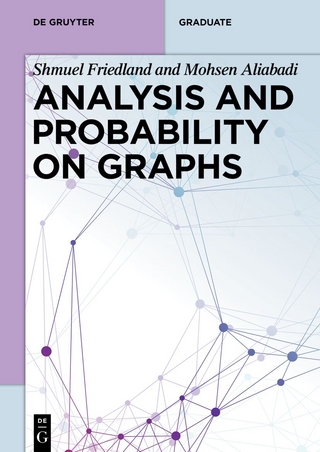
The Science of Baseball
Springer International Publishing (Verlag)
978-3-319-88367-0 (ISBN)
- Titel wird leider nicht erscheinen
- Artikel merken
- Explains how to select or design an optimal baseball or softball bat and create models for bat-ball collisions using only fundamental principles of mechanics from high school physics;
- Describes the results of the collision between baseball and bat using basic mathematics such as equations for the speed of the ball after the collision, bat speed after the collision, and bat rotation after the collision;
-Accessible to high school and undergraduate students as well as non-technical aficionados of the science of baseball.
"Dr. Bahill's book is the perfect tool for teaching how to solve some of baseball's basic science problems. Using only simple Newtonian principles and the conservation laws, Dr. Bahill explains how to model bat-ball collisions. Also, he derives equations governing the flight of the ball, and proceeds to show what factors affect air density and how this density affects the ball's flight. And as a unique addition to his fine book, he provides advice for selecting the optimal bat-a surprising bonus!"
Dave Baldwin, PhD
Major League pitcher, 1966-1973, lifetime Major League ERA, 3.08
"If I were the General Manger of a baseball team, I would tell my people to write a ten-page paper describing what this book contains that could improve our performance. I think the book provides the foundation for change."
Bruce Gissing
Executive VP-Operations (retired)
Boeing Commercial Airplanes
"[I] had a chance to read your research, and I fully agree with your findings."
Baseball Legend Ted Williams, in a 1984 letter to the author
Terry Bahill is an Emeritus Professor of Systems Engineering and of Biomedical Engineering at the University of Arizona in Tucson. He served as a Lieutenant in the United States Navy. He received his Ph.D. in electrical engineering and computer science from the University of California, Berkeley. He is the author of eight engineering books and over two hundred and fifty papers, over one hundred of them in peer-reviewed scientific journals. Bahill has worked with dozens of high-tech companies presenting seminars on Systems Engineering, working on system development teams and helping them to describe their Systems Engineering processes. He holds a U.S. patent for the Bat Chooser(TM), a system that computes the Ideal Bat Weight(TM) for individual baseball and softball batters. He was elected to the Omega Alpha Association, the systems engineering honor society. He received the Sandia National Laboratories Gold President's Quality Award. He is a Fellow of the Institute of Electrical and Electronics Engineers (IEEE), of Raytheon Missile Systems, of the International Council on Systems Engineering (INCOSE) and of the American Association for the Advancement of Science (AAAS). He is the Founding Chair Emeritus of the INCOSE Fellows Committee. His picture is in the Baseball Hall of Fame's exhibition "Baseball as America."
Types of Bat-ball Collisions.- Configurations of Bat-ball Collisions.- Equations for Bat-ball Collisions.- The ConLaw Model for Bat-ball Collisions.- Alternative Models.- The Ball in Flight Model.- Dénouement.- General Modeling Principles.
| Erscheinungsdatum | 05.02.2019 |
|---|---|
| Zusatzinfo | XXI, 223 p. 60 illus., 50 illus. in color. |
| Verlagsort | Cham |
| Sprache | englisch |
| Maße | 155 x 235 mm |
| Themenwelt | Mathematik / Informatik ► Mathematik ► Wahrscheinlichkeit / Kombinatorik |
| Technik ► Maschinenbau | |
| Schlagworte | Baseball Ball velocity after a collision • Batted-ball speed • Center of Percussion • Coefficient of Restitution • Collision at center of mass • Collision at sweet spot • Conservation of Angular Momentum • Conservation of Linear Momentum • Conservation of Momentum • Equations for Bat-ball Collisions • Models for swinging a bat • Optimal bat • Physics of baseball • Pitch speed • Science of Baseball • Sensitivity Analysis • sensitivity functions • Softball • Spin of ball • sweet spot |
| ISBN-10 | 3-319-88367-4 / 3319883674 |
| ISBN-13 | 978-3-319-88367-0 / 9783319883670 |
| Zustand | Neuware |
| Informationen gemäß Produktsicherheitsverordnung (GPSR) | |
| Haben Sie eine Frage zum Produkt? |
aus dem Bereich


